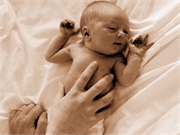Increased risk for mortality seen in the first year of life, predominantly in the early neonatal period
TUESDAY, April 7, 2020 (HealthDay News) — Compared with children who are naturally conceived, children who are conceived via assisted reproductive techniques (ART) may be at increased risk for mortality during their first year of life, according to a study published in the March issue of Fertility and Sterility.
Kenny A. Rodriguez-Wallberg, M.D., Ph.D., from the Karolinska Institutet in Stockholm, and colleagues compared mortality between children who were conceived using ART and those who were conceived naturally among 2,847,108 singleton live-born infants born between 1983 and 2012 in Sweden.
The researchers found that the infant mortality rate among 43,506 singletons who were conceived using ART was higher compared with that seen among infants who were conceived naturally (adjusted hazard ratio, 1.45) and more so after transfer of cryopreserved embryos (adjusted hazard ratio, 2.30). Specifically, children born after a transfer of blastocysts had an increased early neonatal mortality risk (adjusted hazard ratio, 2.40). The investigators did not see an increased mortality risk between the ages of 1 and 18 years for singletons conceived using ART.
“It is important to note that even if we, on a group level, can see a somewhat increased risk of infant mortality after IVF, the absolute risk for each individual is still very small,” Rodriguez-Wallberg said in a statement. “It is also reassuring to know that there is no increased risk of mortality in this group of children beyond the first year of life.”
Copyright © 2020 HealthDay. All rights reserved.








